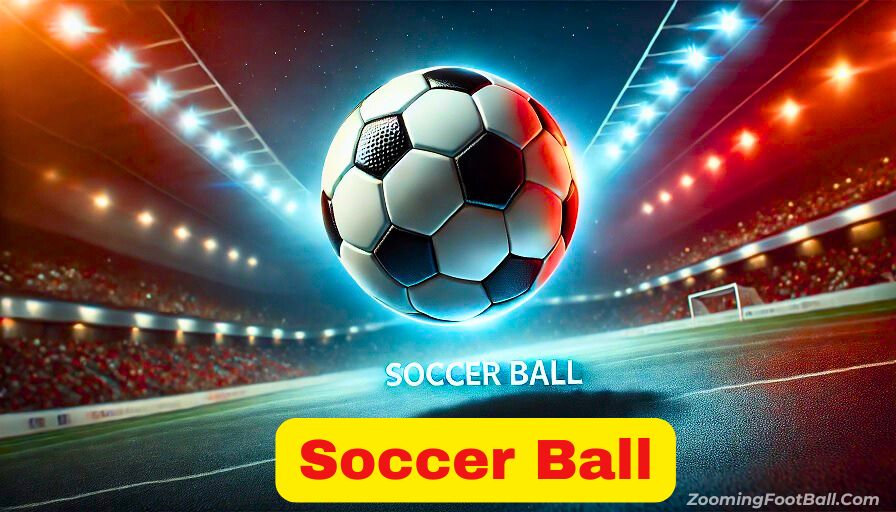History and Evolution of Soccer Ball
The soccer ball has come a long way since its humble beginnings. From rudimentary designs to cutting-edge technology, the evolution of the soccer ball reflects the growth of the sport itself. Let’s take a closer look at how soccer ball have transformed over the years.
Early Designs of Soccer Ball – Leather, Bladders, Laced Construction
The earliest soccer ball were far from the high-tech equipment we see today. In the 19th century, soccer ball were made from leather and stuffed with animal bladders, usually from pigs or cows. These ball were heavy, especially when wet, and their shape was far from perfect. Imagine playing with a ball that could change shape mid-game!
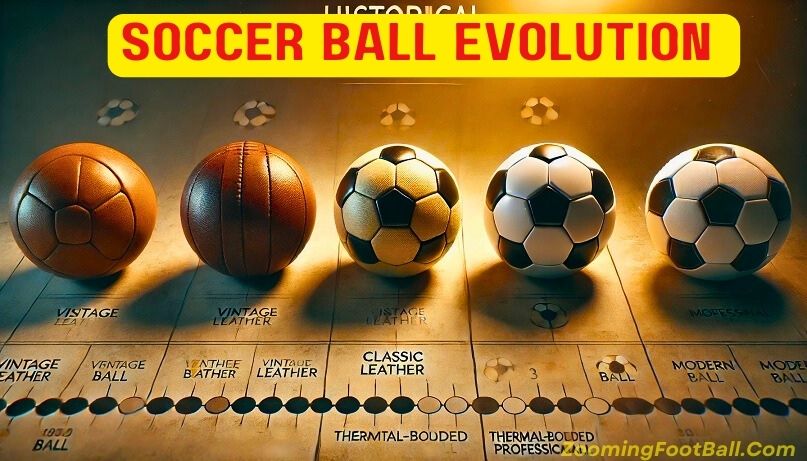
The introduction of laced construction in the mid-1800s was a game-changer. The leather panels were stitched together, and the bladder was inserted through a small opening, which was then laced shut. This design improved the ball’s shape and durability, but it still had flaws. The laces could cause uneven bounces, and the leather absorbed water, making the ball heavier during rainy matches.
| Early Soccer Ball Features | Details |
| Material | Leather |
| Bladder | Animal bladders (pig/cow) |
| Construction | Hand-stitched, laced |
| Weight When Wet | Up to 2x heavier |
| Shape | Irregular, prone to deformation |
Modern Innovations – Vulcanized Rubber, Thermal Bonding, Smart Soccer Ball Tech
The 20th century brought significant advancements in soccer ball design. In 1855, Charles Goodyear introduced vulcanized rubber, a process that made rubber more durable and water-resistant. This innovation laid the foundation for modern soccer ball.
In 1962, Eigil Nielsen revolutionized the game with the 32-panel ball design. This design, known as the “buckyball,” improved the ball’s spherical shape and aerodynamics, making it more predictable in flight.
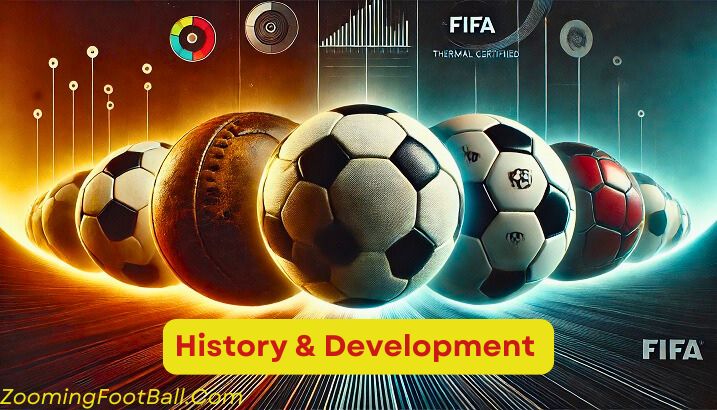
Today, thermal bonding has replaced traditional stitching. This method uses heat to fuse panels together, creating a seamless surface. The result? Better flight accuracy and water resistance.
The latest innovation is smart ball technology. Ball like the Adidas miCoach Smart Ball come equipped with sensors that track ball trajectory, spin, and velocity. These ball are used in high-level competitions to provide real-time data for players and coaches.
| Modern Soccer Ball Features | Details |
| Material | Synthetic leather (PU, PVC) |
| Construction | Thermal bonding, machine-stitched |
| Technology | Smart sensors for performance tracking |
| Aerodynamics | Improved flight accuracy |
| Weight | 14-16 oz (FIFA standard) |
Future Trends – Eco-Friendly Materials, AI-Driven Designs
The future of soccer ball is all about sustainability and innovation. Brands like Adidas are leading the way with eco-friendly materials. For example, the Adidas Parley ball is made from recycled ocean plastic, reducing environmental impact without compromising performance.
AI-driven designs are also on the horizon. Engineers are using artificial intelligence to optimize ball shape and panel configuration for better aerodynamics and performance. Imagine a ball that adapts to your playing style!
Another exciting trend is the use of biodegradable materials. These ball break down naturally after use, reducing waste. While still in development, they promise a greener future for the sport.
| Future Soccer Ball Trends | Details |
| Eco-Friendly Materials | Recycled plastic, biodegradable materials |
| AI-Driven Designs | Optimized aerodynamics, personalized performance |
| Sustainability | Reduced environmental impact |
| Smart Features | Enhanced data tracking, adaptive designs |
The evolution of the soccer ball is a testament to human ingenuity. From leather and laces to smart ball and eco-friendly designs, each innovation has brought us closer to the perfect ball. As technology advances, who knows what the future holds? One thing’s for sure: the beautiful game will keep evolving, and so will the ball at its center. ⚽
Types of Soccer Ball Explained
Not all soccer ball are created equal. Each type is designed for specific playing conditions, skill levels, and purposes. Whether you’re playing in a high-level competition or practicing footwork in your backyard, choosing the right ball is crucial. Let’s break down the different types of ball and their unique features.
Professional Match Ball (FIFA Quality Pro Standards, Adidas Finale)
Professional match soccer ball are the pinnacle of soccer ball design. These balls are built to meet strict FIFA Quality Pro standards, ensuring they perform flawlessly in high-level competitions like the World Cup or Champions League.
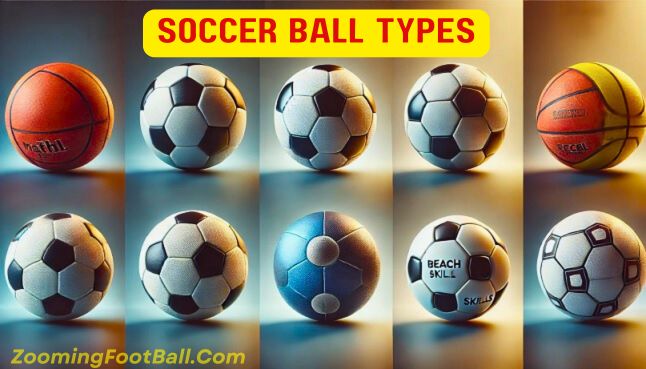
Take the Adidas Finale, for example. This ball is crafted with thermally bonded panels for a seamless surface, improving aerodynamics and flight accuracy. It’s also tested for water resistance, durability, and spherical shape to meet FIFA standards.
| Professional Match Ball Features | Details |
| Construction | Thermal bonding, 32-panel design |
| Material | High-grade polyurethane (PU) |
| Weight | 14-16 oz (FIFA standard) |
| Usage | Professional matches, tournaments |
| Example | Adidas Finale, Nike Flight |
Training/Practice Ball (Durability Focus, Machine-Stitched vs. Thermal Bonded)
Training soccer ball are designed for durability and cost-effectiveness. Unlike professional match ball, they’re built to withstand daily use on rough surfaces like artificial turf or grass fields.
There are two main types of training ball: machine-stitched and thermal bonded. Machine-stitched ball are more affordable and durable, making them ideal for team practices.
Thermal-bonded ball, on the other hand, offer better performance and water resistance, but they come at a higher price.
| Training Ball Features | Details |
| Construction | Machine-stitched or thermal bonded |
| Material | Polyurethane (PU) or polyvinyl carbonate (PVC) |
| Weight | 14-16 oz |
| Usage | Team practices, drills |
| Example | Nike Strike, Select Numero 10 |
Indoor/Futsal Ball (Low-Bounce, Smaller Sizes)
Indoor soccer ball and futsal soccer ball are specifically designed for indoor play. These ball are smaller (size 4) and heavier than standard soccer ball, with a low-bounce design to suit hard surfaces like gym floors.
Futsal ball, in particular, are built for fast-paced gameplay. They have a felt-type outer covering to reduce friction and improve ball control. Brands like Senda and Select offer excellent options for futsal enthusiasts.
| Indoor/Futsal Ball Features | Details |
| Size | Size 4 (smaller than standard) |
| Weight | Slightly heavier (16-17 oz) |
| Bounce | Low bounce for hard surfaces |
| Usage | Indoor arenas, futsal courts |
| Example | Senda Futsal Ball, Select Futsal Ball |
Beach/Street Ball (Water-Resistant, Textured)
Beach soccer ball and street soccer ball are built for unconventional playing surfaces. Beach ball are made with water-resistant materials to handle sand-based soccer, while street ball feature textured surfaces for better grip on concrete or asphalt.
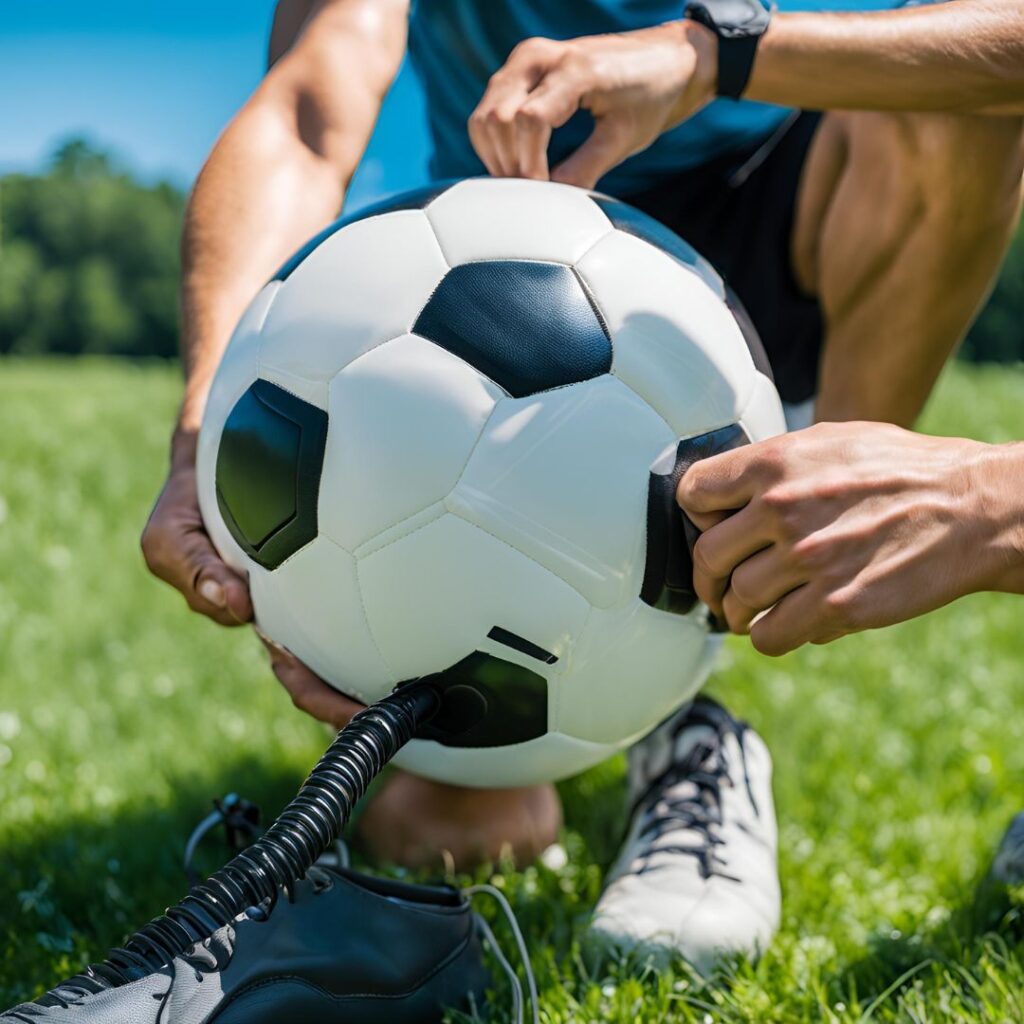
These ball are lightweight and durable, making them perfect for casual play. Brands like Baden and Mikasa offer high-quality options for beach and street soccer.
| Beach/Street Ball Features | Details |
| Material | Foam or rubber for water resistance |
| Surface | Textured for better grip |
| Weight | Lightweight (12-14 oz) |
| Usage | Beach, street, urban play |
| Example | Baden Beach Ball, Mikasa Street Ball |
Promotional/Fan Ball (Lightweight, Custom Logos)
Promotional soccer ball are designed for fans, not players. These ball are lightweight and often feature custom logos or team branding. While they’re great for souvenirs or autographs, they’re not suitable for actual gameplay due to their lower durability and performance.
| Promotional Ball Features | Details |
| Material | Low-grade PVC or rubber |
| Weight | Lightweight (10-12 oz) |
| Usage | Souvenirs, autographs |
| Example | Custom-branded team ball |
Mini/Skills Ball (Size 1-2, Drills & Youth Training)
Mini soccer ball and skills ball are perfect for youth training and drills. These ball come in smaller sizes (size 1 or size 2) and are ideal for improving footwork, ball control, and freestyle tricks.
They’re also great for young players who are just starting out. Brands like Adidas and Nike offer mini ball that mimic the feel of full-sized ball, helping kids develop their skills.
| Mini/Skills Ball Features | Details |
| Size | Size 1 (18” circumference) or size 2 (20”) |
| Weight | Lightweight (8-10 oz) |
| Usage | Youth training, drills, freestyle |
| Example | Adidas Mini Ball, Nike Skills Ball |
Comparison Table: Types of Soccer Ball
| Type | Best For | Size | Weight | Example |
| Professional Match | High-level competitions | Size 5 | 14-16 oz | Adidas Finale |
| Training | Practice sessions | Size 5 | 14-16 oz | Nike Strike |
| Indoor/Futsal | Indoor play | Size 4 | 16-17 oz | Senda Futsal Ball |
| Beach/Street | Sand-based soccer | Size 5 | 12-14 oz | Baden Beach Ball |
| Promotional | Souvenirs | Size 5 | 10-12 oz | Custom-branded ball |
| Mini/Skills | Youth training | Size 1-2 | 8-10 oz | Adidas Mini Ball |
Whether you’re a professional player, a weekend warrior, or a young enthusiast, there’s a soccer ball designed just for you. Understanding the types of soccer ball and their unique features will help you make the right choice for your game. So, lace up your boots, grab the right ball, and hit the field! ⚽
Soccer Ball Construction & Materials
The construction and materials of a ball play a huge role in its performance, durability, and feel. Whether you’re playing on grass fields, artificial turf, or indoor arenas, understanding how ball are made can help you choose the right one. Let’s dive into the details of ball construction and the materials used.
Hand-Stitched vs. Machine-Stitched vs. Thermal Bonded vs. Hybrid
The way a ball is constructed affects its performance and longevity. Here’s a breakdown of the four main construction methods:
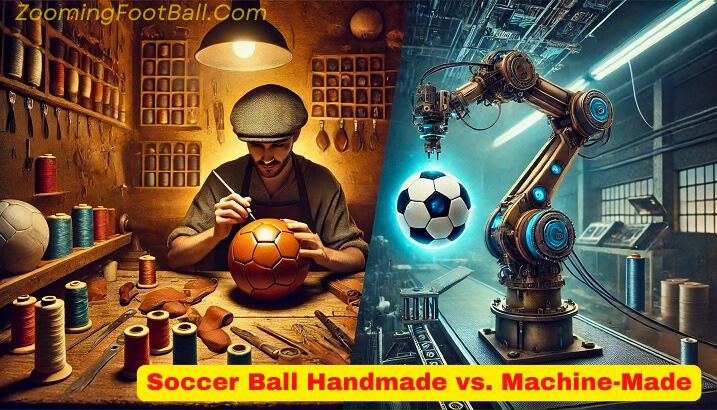
1-Hand-Stitched Ball
These are the premium option. Skilled artisans stitch each panel by hand, ensuring precision and durability. Hand-stitched ball are often used in professional match ball because they offer superior feel and control. However, they’re expensive and take over 30 hours to make.
2-Machine-Stitched Ball
Machine stitching is faster and more cost-effective. These ball are durable and ideal for training ball or recreational ball. While they lack the premium feel of hand-stitched ball, they’re perfect for everyday use.
3-Thermal Bonded Ball
This modern method uses heat to fuse panels together, creating a seamless surface. Thermal bonding improves aerodynamics and water resistance, making it a popular choice for high-level competitions. However, it’s more expensive than machine stitching.
4-Hybrid Ball
Hybrid construction combines stitching and thermal bonding. For example, the panels might be stitched, and the seams thermally bonded. This method balances durability and performance, making it a versatile option.
| Construction Method | Pros | Cons | Best For |
| Hand-Stitched | Premium feel, durable | Expensive, time-consuming | Professional matches |
| Machine-Stitched | Affordable, durable | Less precise, heavier | Training, recreational play |
| Thermal Bonded | Seamless, water-resistant | Expensive, less traditional feel | High-level competitions |
| Hybrid | Balanced performance, versatile | Higher cost than machine-stitched | All-around use |
Panel Design – 32-Panel vs. 6-Panel for Aerodynamics
The panel design of a ball affects its aerodynamics and flight stability. The two most common designs are the 32-panel ball and the 6-panel ball.
32-Panel Ball Design
This classic design, introduced by Eigil Nielsen in 1962, is the most widely used. The 32 panels create a near-perfect spherical shape, ensuring consistent flight trajectory and bounce. It’s the standard for professional match ball.
6-Panel Ball Design
Modern designs like the Adidas Teamgeist (2006 World Cup ball) use fewer panels for a smoother surface. This reduces air resistance, improving flight accuracy. However, some players find 6-panel ball harder to control due to their lower grip.
| Panel Design | Pros | Cons | Best For |
| 32-Panel | Consistent flight, traditional feel | Slightly heavier | Professional matches |
| 6-Panel | Improved aerodynamics, modern look | Less grip, harder to control | High-level competitions |
Bladder Types – Latex for Feel vs. Butyl for Air Retention
The bladder is the inner layer that holds the air. It’s crucial for the ball’s bounce, feel, and air retention.
Latex Bladders:
Latex offers a soft, responsive feel, making it popular in professional match ball. However, it loses air faster and requires frequent inflation.
Butyl Bladders:
Butyl retains air longer, making it ideal for training ball and recreational ball. While it’s less responsive than latex, it’s more durable and low-maintenance.
| Bladder Type | Pros | Cons | Best For |
| Latex | Soft feel, responsive | Loses air quickly | Professional matches |
| Butyl | Retains air longer, durable | Less responsive | Training, recreational play |
Outer Materials – PVC, PU, TPU Performance vs. Price
The outer material determines the ball’s durability, feel, and performance.
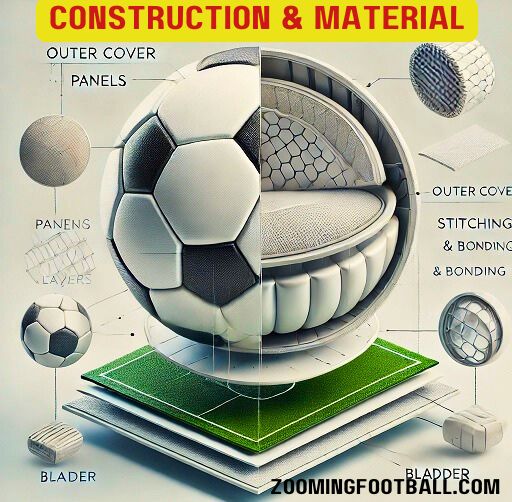
PVC (Polyvinyl Carbonate):
PVC is the most affordable option. It’s durable and water-resistant, making it ideal for recreational ball. However, it’s heavier and less responsive than other materials.
PU (Polyurethane):
PU offers a soft touch and excellent performance. It’s used in professional match ball and training ball. While more expensive than PVC, it’s worth the investment for serious players.
TPU (Thermoplastic Polyurethane):
TPU is a premium material that combines the durability of PVC with the feel of PU. It’s often used in high-level competitions and indoor ball.
| Outer Material | Pros | Cons | Best For |
| PVC | Affordable, durable | Heavy, less responsive | Recreational play |
| PU | Soft feel, excellent performance | More expensive than PVC | Professional matches, training |
| TPU | Durable, premium feel | Most expensive | High-level competitions |
Infographic: Anatomy of a Soccer Ball
Below is a simplified breakdown of a soccer ball’s layers:
- Outer Cover: Made of PVC, PU, or TPU for durability and feel.
- Panels: Typically 32-panel or 6-panel designs for aerodynamics.
- Stitching/Thermal Bonding: Holds the panels together.
- Bladder: Latex or butyl for air retention and bounce.
Understanding soccer ball construction and materials helps you make an informed choice. Whether you’re looking for a professional match ball or a training ball, knowing what goes into a soccer ball ensures you get the best performance for your game. ⚽
How to Choose the Right Soccer Ball
Choosing the right soccer ball can feel overwhelming with so many options available. Whether you’re a beginner, a seasoned player, or a parent buying for your child, understanding how to pick the perfect ball is key. Let’s break it down by age and size, playing surface, position/style, and budget.
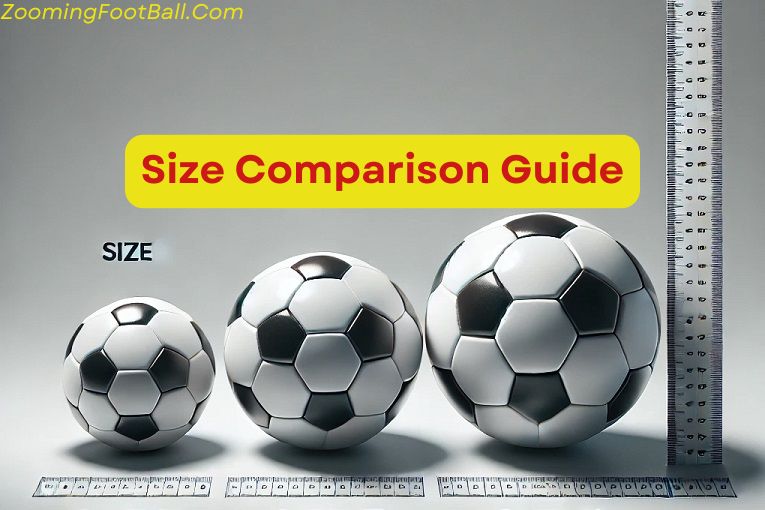
By Age & Size (Size 3/4/5 Chart)
The size of the soccer ball you choose should match the player’s age and skill level. Here’s a quick guide:
| Ball Size | Age Group | Weight | Circumference | Best For |
| Size 5 | 12+ years | 14-16 oz | 27-28 inches | Official matches, adults |
| Size 4 | 8-12 years | 12-14 oz | 25-26 inches | Youth leagues, training |
| Size 3 | Under 8 years | 10-12 oz | 23-24 inches | Beginners, skill development |
| Size 1 | All ages | 8-10 oz | 18-20 inches | Freestyle, drills |
By Playing Surface (Grass, Turf, Indoor, Beach)
The surface you play on determines the type of soccer ball you need.
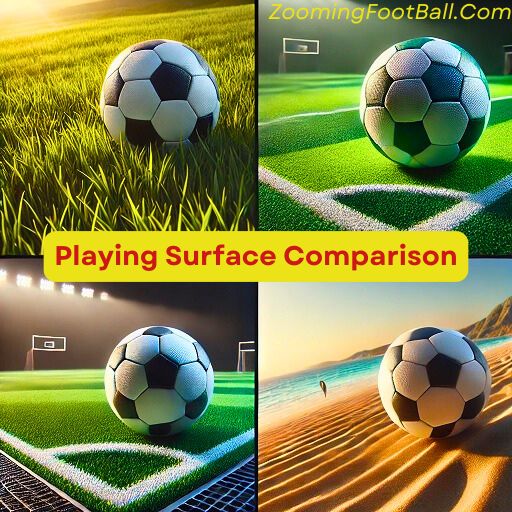
Grass Fields
Use standard match soccer ball or training soccer ball with machine-stitched or thermal-bonded construction.
Look for water-resistant materials like PU or TPU for durability.
Artificial Turf
Choose abrasion-resistant ball with reinforced stitching to withstand rough surfaces.
Training soccer ball are ideal for turf.
Indoor Arenas
Opt for indoor soccer ball or futsal soccer ball with a low-bounce design.
These ball are smaller (size 4) and heavier for better control on hard surfaces.
Beach Soccer
Use beach soccer ball made from water-resistant materials like foam or rubber.
These ball are lightweight and designed for sand-based soccer.
| Playing Surface | Ball Type | Key Features |
| Grass Fields | Standard match/training ball | Water-resistant, durable |
| Artificial Turf | Training ball | Abrasion-resistant, reinforced |
| Indoor Arenas | Indoor/futsal ball | Low bounce, size 4 |
| Beach Soccer | Beach soccer ball | Water-resistant, lightweight |
By Position/Style (Strikers: Lightweight; Defenders: Durability)
Your playing position and style also influence your choice of soccer ball.
Strikers:
- Look for lightweight ball with a soft feel for better ball control and shot accuracy.
- Professional match soccer ball are ideal.
Midfielders:
- Choose ball with balanced durability and performance.
- Training soccer ball or hybrid construction ball work well.
Defenders:
- Opt for durable ball that can withstand rough play.
- Machine-stitched soccer ball are a great choice.
Goalkeepers:
- Focus on ball with good grip and flight predictability.
- Thermal-bonded soccer ball are excellent for goalkeepers.
| Position | Ball Type | Key Features |
| Strikers | Professional match ball | Lightweight, soft feel |
| Midfielders | Training/hybrid ball | Balanced durability, performance |
| Defenders | Machine-stitched ball | Durable, abrasion-resistant |
| Goalkeepers | Thermal-bonded ball | Good grip, predictable flight |
By Budget (Under 20vs.20vs.150+ Match Ball)
Your budget plays a big role in choosing the right soccer ball.
Under $20:
- These are recreational soccer ball made from PVC or low-grade PU.
- Ideal for casual play or beginners.
20−20−50:
- Training soccer ball fall in this range.
- Made from PU or TPU, they offer better performance and durability.
50−50−100:
- High-quality training ball or entry-level match ball.
- Great for serious players and youth leagues.
$150+:
- Professional match soccer ball with thermal bonding and FIFA approval.
- Designed for high-level competitions.
| Budget Range | Ball Type | Key Features |
| Under $20 | Recreational ball | Affordable, casual play |
| 20−20−50 | Training ball | Durable, good performance |
| 50−50−100 | Training/match ball | High-quality, serious play |
| $150+ | Professional match ball | FIFA-approved, top performance |
Interactive Quiz: “Find Your Perfect Ball in 60 Seconds”
Answer these quick questions to find your ideal soccer ball:
- What’s your age group?
- Under 8 (Size 3)
- 8-12 (Size 4)
- 12+ (Size 5)
- Where do you play most often?
- Grass fields (Standard match/training ball)
- Artificial turf (Abrasion-resistant ball)
- Indoor arenas (Futsal/indoor ball)
- Beach (Beach soccer ball)
- What’s your playing position?
- Striker (Lightweight ball)
- Midfielder (Balanced ball)
- Defender (Durable ball)
- Goalkeeper (Grip-focused ball)
- What’s your budget?
- Under $20 (Recreational ball)
- 20−20−50 (Training ball)
- 50−50−100 (High-quality ball)
- $150+ (Professional match ball)
Result: Based on your answers, you’ll get a personalized recommendation for the perfect soccer ball! Choosing the right soccer ball doesn’t have to be complicated. By considering age and size, playing surface, position/style, and budget, you can find the perfect ball for your needs. Ready to hit the field? Grab your ideal ball and start playing! ⚽
Top Soccer Ball Brands Compared
When it comes to soccer ball, not all brands are created equal. From professional match soccer ball to training soccer ball, each brand offers unique features, durability, and price points. Let’s compare the top soccer ball brands to help you find the best one for your game.
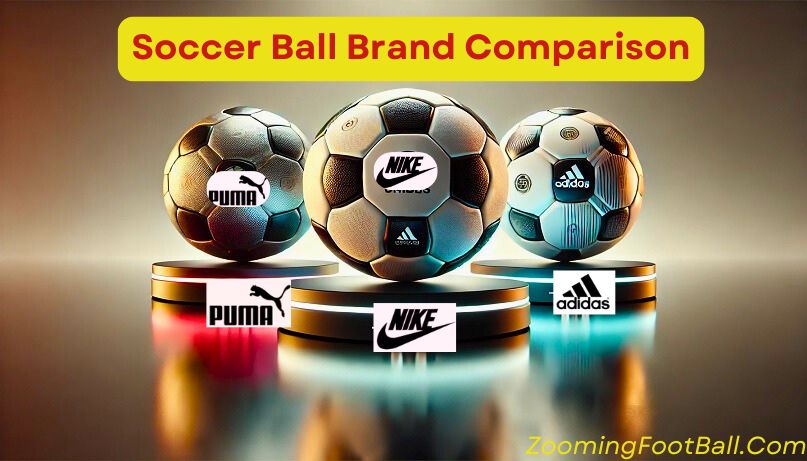
Adidas vs. Nike vs. Puma (Durability, Price, Features)
These three giants dominate the soccer ball market, each with its own strengths.
- Adidas:
- Durability: Known for their thermal-bonded soccer ball, Adidas offers unmatched durability and water resistance.
- Price: Premium match ball like the Adidas Finale cost 150+,while training ball range from 150+,whiletrainingballrangefrom30-$70.
- Features: Adidas ball are FIFA-approved and used in high-level competitions like the World Cup and Champions League.
- Nike:
- Durability: Nike focuses on grip and flight accuracy, with ball like the Nike Flight featuring aerodynamic grooves.
- Price: Match ball cost 100−100−150, and training ball are 20−20−50.
- Features: Nike ball are popular for their soft feel and modern designs.
- Puma:
- Durability: Puma ball are lightweight and durable, with a focus on performance and control.
- Price: Match ball range from 80−80−120, and training ball are 20−20−40.
- Features: Puma’s Ultra Light technology makes their ball ideal for strikers and midfielders.
| Brand | Durability | Price Range | Key Features |
| Adidas | High | 30−30−150+ | FIFA-approved, thermal bonding |
| Nike | Medium-High | 20−20−150 | Aerodynamic grooves, soft feel |
| Puma | Medium | 20−20−120 | Ultra Light technology, control |
Select and Mitre (Budget-Friendly)
For players on a budget, Select and Mitre offer excellent options without breaking the bank.
- Select
- Durability: Known for their machine-stitched ball, Select ball are durable and affordable.
- Price: 20−20−50 for training ball.
- Features: Popular for recreational soccer ball and youth leagues.
- Mitre
- Durability: Mitre ball are built for training and casual play, with reinforced stitching.
- Price: 15−15−40 for training ball.
- Features: Great for artificial turf and grass fields.
| Brand | Durability | Price Range | Key Features |
| Select | Medium | 20−20−50 | Machine-stitched, affordable |
| Mitre | Medium | 15−15−40 | Reinforced stitching, casual play |
Niche Brands – Senda (Eco-Friendly), Baden (Youth Focus)
For players with specific needs, niche brands like Senda and Baden offer unique options.
- Senda:
- Eco-Friendly: Senda specializes in eco-friendly soccer ball made from recycled materials.
- Price: 30−30−60.
- Features: Perfect for players who value sustainability.
- Baden:
- Youth Focus: Baden designs ball for youth soccer and skill development.
- Price: 20−20−50.
- Features: Offers glow-in-the-dark ball and mini soccer ball for kids.
| Brand | Durability | Price Range | Key Features |
| Senda | Medium | 30−30−60 | Eco-friendly, recycled materials |
| Baden | Medium | 20−20−50 | Youth-focused, fun designs |
Affiliate-Friendly Section for Monetization
Looking to buy your next soccer ball? Here are some top picks from trusted brands:
- Adidas Finale: Perfect for professional matches.
- Nike Strike: Great for training sessions.
- Puma Ultra Light: Ideal for strikers.
- Select Numero 10: Affordable and durable.
- Senda Futsal Ball: Eco-friendly and high-quality.
Whether you’re looking for a professional match ball, a training ball, or an eco-friendly option, there’s a brand and ball for everyone at Amazon. Choose wisely and elevate your game! ⚽
Maintenance & Care Guide
A well-maintained ball lasts longer and performs better. Whether you’re using a professional match ball or a training ball, proper care is essential. Let’s break down the best practices for cleaning, storage, inflation, and repairs.
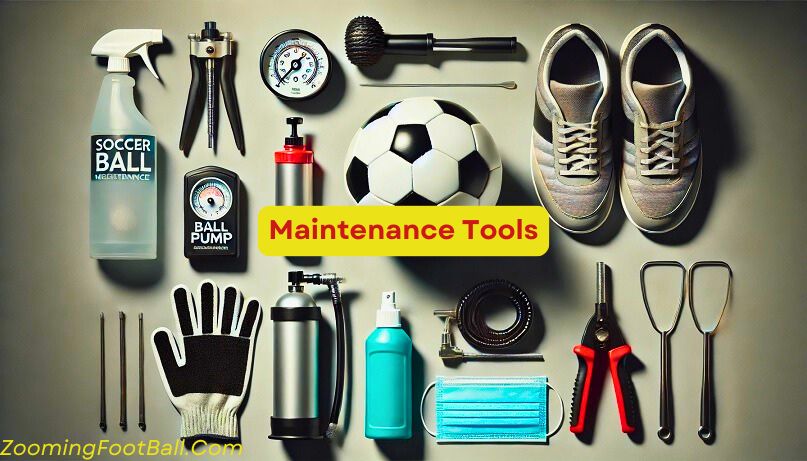
Cleaning – Avoid Harsh Chemicals, Use Mild Soap
Keeping your ball clean ensures it stays in top condition. Here’s how to do it right:
- Avoid Harsh Chemicals:
- Never use bleach, ammonia, or abrasive cleaners. These can damage the outer materials like PU or TPU.
- Use Mild Soap:
- Mix a few drops of mild dish soap with warm water.
- Dip a soft cloth or sponge into the solution and gently wipe the ball’s surface.
- Rinse and Dry:
- Rinse the ball with clean water to remove soap residue.
- Dry it with a clean towel and let it air dry completely before use.
| Cleaning Tips | Do’s | Don’ts |
| Materials | Mild soap, warm water, soft cloth | Harsh chemicals, abrasive tools |
| Process | Wipe gently, rinse thoroughly | Soak the ball, scrub aggressively |
Storage – Avoid Extreme Temperatures, Use Soccer Ball Bags
Proper storage protects your ball from damage. Follow these tips:
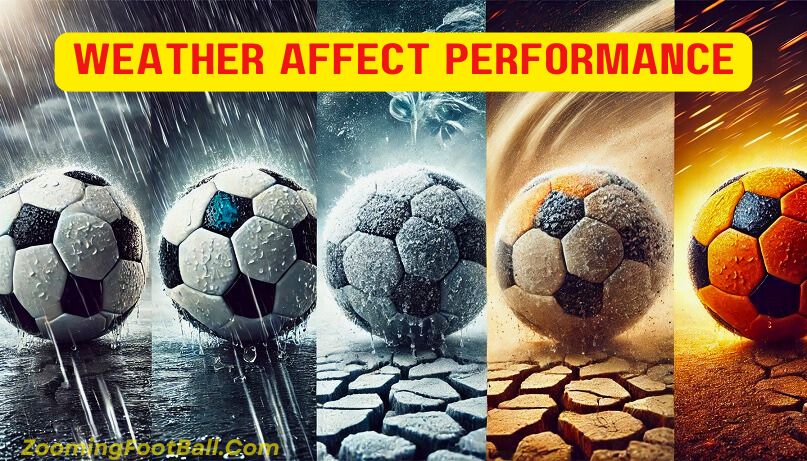
- Avoid Extreme Temperatures:
- Don’t leave your ball in direct sunlight or freezing conditions. Extreme heat can warp the outer materials, while cold can make them brittle.
- Use Ball Bags:
- Store your ball in a ball bag to protect it from dust, dirt, and punctures.
- Ball bags also make it easy to carry your ball to and from the field.
- Store Indoors:
- Keep your ball in a cool, dry place like a closet or garage. Avoid damp areas to prevent mold growth.
- Keep your ball in a cool, dry place like a closet or garage. Avoid damp areas to prevent mold growth.
| Storage Tips | Do’s | Don’ts |
| Location | Cool, dry place, ball bag | Direct sunlight, freezing temps |
| Protection | Use a ball bag, store indoors | Leave outside, expose to moisture |
Inflation – PSI Guidelines, Use a Pressure Gauge
Proper inflation ensures your ball performs at its best. Here’s how to get it right:
- PSI Guidelines:
- Most soccer ball require 8.5-15.6 PSI (pounds per square inch). Check the manufacturer’s guidelines for your specific ball.
- Use a Pressure Gauge:
- Always use a pressure gauge to measure the air pressure. Overinflating can damage the bladder, while underinflating affects bounce and flight accuracy.
- Inflate Gradually:
- Add air in small increments and check the pressure frequently. Stop when the ball feels firm but not hard.
- Add air in small increments and check the pressure frequently. Stop when the ball feels firm but not hard.
| Inflation Tips | Do’s | Don’ts |
| Pressure | 8.5-15.6 PSI, use a gauge | Overinflate, guess the pressure |
| Process | Inflate gradually, check often | Use sharp needles, ignore PSI |
Repair Tips – Patch Kits for Stitched Soccer Ball
Even the best ball can get damaged. Here’s how to fix common issues:
- Patch Kits for Stitched Ball:
- For hand-stitched or machine-stitched ball, use a patch kit to repair small tears.
- Clean the area, apply adhesive, and press the patch firmly over the tear.
- Seal Minor Punctures:
- For small holes, use a rubber cement or ball repair glue. Apply a small amount to seal the puncture.
- Replace the Bladder:
- If the bladder is damaged, you can replace it. Remove the outer cover, insert a new bladder, and stitch or bond the panels back together.
- If the bladder is damaged, you can replace it. Remove the outer cover, insert a new bladder, and stitch or bond the panels back together.
| Repair Tips | Do’s | Don’ts |
| Tools | Patch kits, rubber cement | Use tape, ignore small tears |
| Process | Clean area, apply adhesive | Overuse glue, skip drying time |
By following these maintenance and care tips, you can extend the life of your ball and keep it performing at its best. Whether you’re cleaning, storing, inflating, or repairing, a little effort goes a long way. Take care of your ball, and it’ll take care of your game! ⚽
You may like this: Rules Of Soccer
FAQs – Everything You Need to Know About Soccer Ball
Got questions about soccer ball? We’ve got answers! Here’s everything you need to know about FIFA standards, ball lifespan, playing surfaces, and more.
What’s the difference between FIFA Quality Pro and FIFA Basic?
FIFA Quality Pro and FIFA Basic are two certification levels for soccer ball.
Quality Pro
- These ball are used in high-level competitions like the World Cup and Champions League.
- They undergo rigorous testing for weight, size, spherical shape, water absorption, and rebound.
- Example: Adidas Finale.
Basic
- These ball are for casual play and lower-level competitions.
- They meet basic standards but aren’t as rigorously tested as FIFA Quality Pro ball.
- Example: Select Numero 10.
| Certification | Usage | Testing |
| FIFA Quality Pro | Professional matches | Rigorous (weight, size, shape) |
| FIFA Basic | Casual play | Basic standards |
Can I use a futsal ball on turf?
Yes, you can use a futsal ball on turf, but it’s not ideal.
- Futsal Ball:
- Designed for indoor play on hard surfaces.
- They’re smaller (size 4) and heavier, with a low-bounce design.
- Turf Compatibility:
- Futsal ball work on turf but may feel heavier and slower.
- For turf, it’s better to use training soccer ball designed for artificial surfaces.
More FAQs About Soccer Ball
How long do soccer ball last?
The lifespan of a ball depends on its usage and care.
- Professional Match Ball:
- Last 10-20 matches with proper care.
- Used in high-level competitions, they’re replaced frequently for optimal performance.
- Training Ball:
- Last 1-2 years with regular use.
- Durable and designed for frequent practice sessions.
- Recreational Ball:
- Last several years with occasional use.
- Made from cheaper materials like PVC, they’re less durable but affordable.
| Ball Type | Lifespan | Factors |
| Professional Match | 10-20 matches | High usage, rigorous play |
| Training | 1-2 years | Regular use, proper care |
| Recreational | Several years | Occasional use, low maintenance |
Are expensive soccer ball worth it?
It depends on your needs.
- Expensive Ball ($150+):
- Worth it for professional players and high-level competitions.
- Offer superior performance, durability, and FIFA approval.
- Mid-Range Ball (50−50−100):
- Great for serious players and youth leagues.
- Balance performance and cost.
- Budget Ball (Under $50):
- Ideal for casual play and beginners.
- Affordable but less durable and performant.
| Price Range | Best For | Pros |
| $150+ | Professional matches | Top performance, FIFA-approved |
| 50−50−100 | Serious players, youth | Balanced performance, durability |
| Under $50 | Casual play, beginners | Affordable, good for practice |
What’s the best soccer ball for my playing surface?
The best soccer ball depends on where you play.
| Playing Surface | Ball Type | Key Features |
| Grass Fields | Standard match/training ball | Water-resistant, durable |
| Artificial Turf | Training ball | Abrasion-resistant, reinforced |
| Indoor Arenas | Indoor/futsal ball | Low bounce, size 4 |
| Beach Soccer | Beach soccer ball | Water-resistant, lightweight |
Whether you’re a beginner or a pro, understanding these FAQs helps you make the best choice for your game. Got more questions? Drop them in the comments below!
Conclusion Soccer Ball
Choosing the right soccer ball can transform your game, whether you’re playing on grass fields, artificial turf, or indoor arenas. From understanding the types of soccer balls to knowing how to maintain and care for them, this guide has covered everything you need to make an informed decision.
We explored the history and evolution of soccer balls, from leather and laces to smart ball technology. We compared top soccer ball brands like Adidas, Nike, and Puma, and highlighted budget-friendly options like Select and Mitre. You also learned how to pick the perfect ball based on age, playing surface, position, and budget.
Remember, a well-maintained soccer ball lasts longer and performs better. Follow the cleaning, storage, and inflation tips to keep your ball in top shape. And if you’re still unsure, take our interactive quiz to find your perfect match in seconds!
Ready to elevate your game? Click here to explore our top picks and find the soccer ball that’s right for you. Whether you’re a professional player or a weekend warrior, the right ball makes all the difference. Don’t wait—your perfect game starts now! ⚽
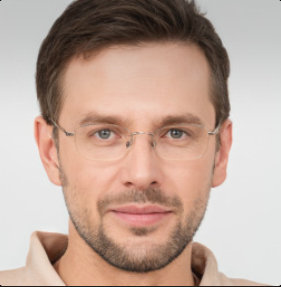
Oliver Brown, a seasoned football blogger with a knack for insightful commentary, brings decades of passion and expertise to Zooming Football. Known for his sharp analysis and engaging storytelling, Oliver delves deep into the game’s nuances, offering readers a unique perspective on football’s most captivating stories and strategies.

